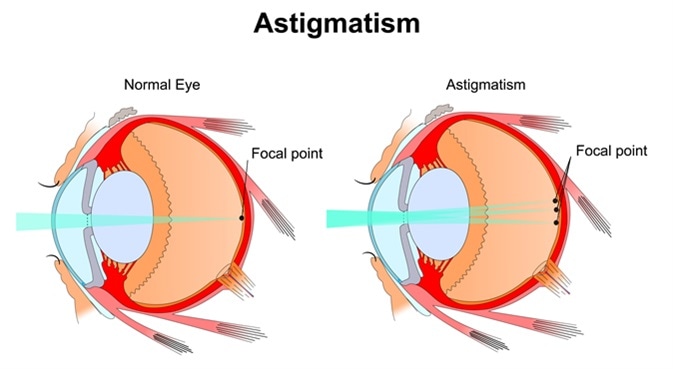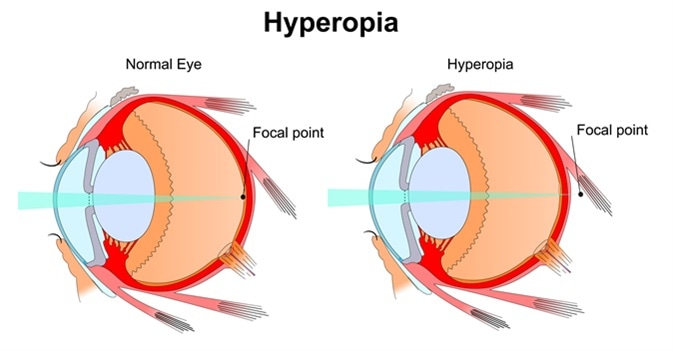The human eye can be affected by a number of aberrations which can reduce the quality of retinal images and general visual perception. Research has shown that age increases the probability of developing higher order aberrations in particular.
What are Aberrations of the Eye?
Described as small optical irregularities, aberrations are imperfections of the eye that result in light being unable to focus onto the retina effectively as well as defects in visual image. There are two types of aberrations; lower-order aberrations (0, 1st and 2nd order), and higher-order aberrations (3rd,4th…).
Higher Order Aberrations
Higher order aberrations (HOAs) of the eye are unable to be corrected by cylinder or spherical corrections and include spherical aberrations, coma and trefoil.
Coma Aberrations
Coma aberrations are caused when light rays from one edge of the pupil focuses before those from the opposing edge. Visually those with this type of aberration may experience smearing of an image so that images may appear to have a tail like a comet.
Trefoil Aberrations
Classed as a third order aberration, trefoil has a more minor affect on image quality compared to an equal amount of coma.
Spherical Aberrations
Spherical aberrations can cause halos surrounding point light sources and a reduction in contrast sensitivity.
It is thought that HOAs are responsible for individuals reporting complaints of glare, halos and reduction in contrast sensitivity following corneal refractive surgery. Approximately 90% of aberrations are caused by the cornea.
The eyes of young people tend to be less affected by higher order aberrations due to the partial compensation of aberration between the surface of the cornea and the internal optics. This mechanism has been found to work systematically for spherical aberrations and horizontal comas. As they are only affected by a small number of spherical aberrations and comas, young eyes are thought to approximate to an aplanatic optical system. However, as we age, more aberrations occur on average, specifically spherical aberrations as well as horizontal comas.
Lower Order Aberrations
Lower order aberrations include astigmatism, positive defocus (myopia), and negative defocus (hyperopia).
Astigmatism
Those with astigmatism have an eye that is shaped like a rugby ball than rather football. As a result, light tends to be focused at more than one place in the eye, causing blurry vision, eye strain and headaches. It is usually accompanied by short or long-sightedness.

Astigmatism. Image Credit: Slave SPB / Shutterstock
Myopia
Myopia, commonly referred to as near-sightedness, is an eye condition whereby individuals experience viewing distant objects in a blurred manner while close objects are seen clearly. It is thought to occur when the eyes grow too long which results in light not focusing on the retina correctly.
Hyperopia
Far-sightedness or hyperopia is the opposite of myopia. Those with the condition are able to see objects in the distance clearly but are unable to view closer objects clearly. It tends to affect those over 40, however, can affect people of all ages.

Hyperopia. Image Credit: Slave SPB / Shutterstock
How are Aberrations Detected?
Wavefront analysis is used to measure aberrations of the optical system. There are a variety of methods that can be used to assess ocular aberrations including Shack-Hartmann wavefront sensing, Tscherning, spatially resolved refractometry and optical path difference aberrometry. Furthermore, it is typically performed using devices similar to the Hartmann-Shack wavefront sensors.
The devices focus a low-power beam onto the retina and then resulting reflected rays of light can then be analyzed. After passing through a variety of lenses and onto a detector, in a perfect optical system, the rays would be parallel and focus on a single plane. Due to the complexity of the eyes’ optics, this may not occur. The degree of which the image deviates from the expected focal point of each lens in the system represents a ‘wavefront error’ or aberration. The wavefront error produced from the wavefront analysis is further broken down into components that mathematically and visually describe the specific elements of the aberration. These components are split into two categories; higher order aberrations and lower order aberrations.
Treatment Options for Aberrations
There is a range of treatment options available for lower order aberrations in particular. For children and young adults with long and short-sightedness, no treatment may be needed as their eyes may adapt naturally, resulting in their vision not being significantly affected. For older adults, treatment is usually required, as due to age, eyes are less able to adapt. The main treatments are glasses or contact lens to ensure light is focused on the retina, and laser eye surgery which changes the shape of the cornea and means contact lenses and glasses don’t need to be worn. The same treatment options also exist for astigmatism.
Further Reading
Last Updated: Mar 20, 2019